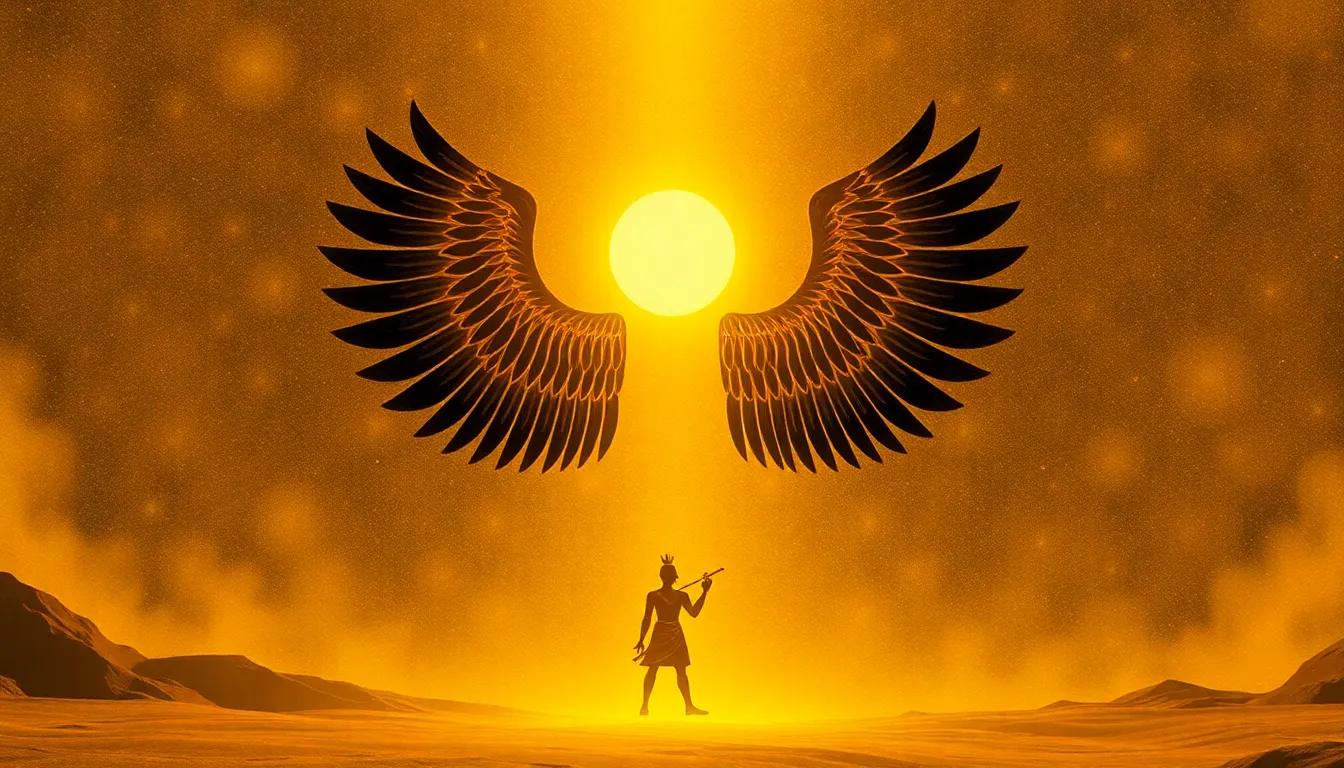The Spiritual Journey of the Soul in Egyptian Beliefs
I. Introduction
Ancient Egyptian spirituality is a rich tapestry woven from beliefs, rituals, and practices that reflect a profound understanding of life, death, and the afterlife. Central to these beliefs is the concept of the soul, which held immense significance in the lives of the ancient Egyptians. This article aims to explore the various facets of the soul’s journey as understood by the ancient Egyptians, shedding light on their intricate beliefs surrounding death and the afterlife.
II. Concept of the Soul in Ancient Egypt
The soul in ancient Egyptian belief was composed of several key components, primarily known as the Ba, Ka, and Akh.
- Ba: Often depicted as a bird with a human head, the Ba represents a person’s individuality and personality. It was believed to leave the body after death and could travel between the living and the dead.
- Ka: This aspect represents the life force or vital essence that sustains an individual. The Ka was believed to remain with the body after death, requiring sustenance through offerings.
- Akh: The Akh is the transformed soul that achieves immortality. It is the result of the successful integration of the Ba and Ka after death.
Integral to the journey of the soul was the heart, considered the seat of emotion, thought, and morality. It was believed that the heart would be weighed against the feather of Ma’at, the goddess of truth and justice, to determine the fate of the soul.
In daily life, the spiritual significance of the soul influenced various aspects, from moral conduct to the importance of maintaining harmony with the divine, ensuring a favorable afterlife.
III. The Afterlife in Egyptian Beliefs
The ancient Egyptians held a complex view of the afterlife, envisioning it as a continuation of life on earth. The afterlife journey began in the Duat, the underworld, a realm filled with challenges and trials.
Upon death, the soul embarked on a perilous journey through the Duat, encountering various deities and barriers along the way. Central to this journey was the figure of Osiris, the god of the afterlife, who ruled over the dead and offered resurrection and eternal life to those deemed worthy.
IV. The Weighing of the Heart Ceremony
One of the most critical events in the soul’s journey was the Weighing of the Heart ceremony, which took place in the Hall of Judgment.
- Description of the ceremony: The deceased would stand before Osiris and a panel of gods, where their heart was placed on one side of a scale, balanced against the feather of Ma’at.
- Significance of the feather of Ma’at: The feather symbolized truth, justice, and moral integrity. A heart lighter than the feather indicated a life lived in accordance with Ma’at.
- Outcomes of the ceremony: If the heart was heavier than the feather, it was devoured by Ammit, a fearsome creature, resulting in the soul’s eternal death. Conversely, a successful weighing granted the soul eternal existence in the Field of Reeds, a paradise where they could live in peace.
V. The Role of Funerary Practices
Funerary practices in ancient Egypt were essential for ensuring the safe passage and continued existence of the soul in the afterlife.
- Mummification: The process of preserving the body through embalming was crucial, as the Ka needed a physical form to inhabit in the afterlife.
- Funerary offerings: Items such as food, drink, and personal belongings were placed in tombs to sustain the deceased in the afterlife. These offerings were believed to provide comfort and support for the soul’s journey.
- Tomb architecture: Tombs were constructed as elaborate structures to house the dead and protect them from grave robbers. They served as gateways to the afterlife, with inscriptions and artwork depicting scenes that would aid the deceased on their journey.
VI. Spiritual Guides and Deities
Throughout the journey of the soul, various deities played significant roles as guides and protectors.
- Anubis: The jackal-headed god of embalming, Anubis was responsible for overseeing the mummification process and guiding souls through the afterlife.
- Thoth: The god of wisdom and writing, Thoth was often depicted as a scribe who recorded the results of the Weighing of the Heart ceremony and provided counsel to the deceased.
Additionally, the Book of the Dead, a compilation of spells and prayers, was used by the living to assist the deceased in navigating the afterlife, highlighting the importance of spiritual preparation and guidance.
VII. The Impact of Egyptian Beliefs on Modern Spirituality
The beliefs of ancient Egyptians regarding the soul and the afterlife have continued to influence modern spirituality and metaphysical practices.
- Influence on contemporary practices: Many modern spiritual movements draw upon Egyptian concepts of the soul, resurrection, and the divine nature of existence.
- Exploration of the soul’s journey: Modern spiritual seekers often explore the themes of transformation, transcendence, and the afterlife, reflecting the ancient quest for understanding the soul’s purpose.
- Continued relevance: Egyptian beliefs offer valuable insights into the nature of existence and the significance of moral conduct, reminding us of the timeless quest for meaning and understanding of the soul.
VIII. Conclusion
In conclusion, the spiritual journey of the soul in ancient Egyptian beliefs is a profound exploration of life, death, and the afterlife. The intricate concepts surrounding the soul, the afterlife journey, and the significance of funerary practices reveal a deep understanding of human existence and morality. These ancient beliefs continue to resonate through the ages, inviting contemporary seekers to delve deeper into the mysteries of the soul and its eternal journey.
As we reflect on the spiritual legacy of ancient Egypt, we are encouraged to further explore and understand the rich tapestry of their beliefs and how they inform our own spirituality today.




